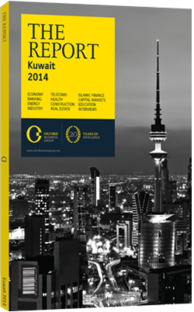OBG talks to Qais Marafie, CEO, Kuwait Life Sciences Company

Interview: Qais Marafie
How detrimental is the lack of medical manpower to the advancement of the health care sector?
QAIS MARAFIE: With the huge expansion in the number of beds in public hospitals and the construction of new, larger facilities, there will be even greater demand for medical professionals in the country, at a time when international demand for staff is also rising, especially in nursing and technology. It is important to incentivise locals to fill such positions by creating a clear and lucrative career ladder. This can lower the need to fill such positions with expensive expats, thus acting as a sustainable and effective way to build local expertise.
To what extent does the regulatory environment need to be changed to encourage a greater level of private sector participation within the sector?
MARAFIE: The current model through which health care services are provided and maintained, under the umbrella of the Ministry of Health, may not be sustainable in the future. Public-private partnership services need to be implemented, especially in the areas of specialised clinics, laboratory diagnostics, clinical training and staff development. As a first step, the health care system should be split into two main branches, regulatory and operations. The regulatory body would be responsible for regulating the health industry and developing care policies, while the operation body would focus on managing government-owned facilities.
With the implementation of the National Healthcare Insurance scheme, patients will be able to choose their preferred vendors, which will create a paradigm shift in the need to enhance facilities and services offered by current public and private providers, creating healthy competition for patients.
How can policy be developed most effectively when it comes to validation of health professionals’ degrees, training and overall practices?
MARAFIE: Because health care practices and delivery techniques are advancing rapidly, a system needs to be implemented to enforce mandatory continuous medical education requirements in order to maintain practitioners’ operating licences. This will keep doctors at the peak of the latest in diagnostics tactics, treatment options and new technologies.
Working with top universities can help to ensure that doctors and health care professionals receive the latest training in their respective fields. In addition, these partnerships can support a continuous professional development programme to assist in the training of second-generation leaders, which can ensure a smooth transition and continuation of professional knowledge.
Training budgets also need to support implementation. As we have seen in international best practices, training receives around 3% of the total annual budget for health care spending. The most important spending area is manpower. Investing in doctors and nurses, and providing them with training, will ensure a better quality of health care for everyone.
What more needs to be done to encourage the expansion of health related research and development (R&D), and what role will universities play?
MARAFIE: To develop a higher level of research at universities requires more than just teaching techniques. This level of R&D requires departmental support to take innovations into the patenting process. Universities need departments which will foster research and then transfer findings on to companies willing to invest in their projects. Once patents are received, groups of funding partners need to be brought to the table to consider financing options until the research is successfully commercialised or sold. Ironically, there is not a single registration pathway in the GCC that allows for the commercial launch of medical devices or medicines without an endorsement from a foreign body. For example, an owner of a locally developed medical device needs to obtain a European CE Mark or an FDA 510k. These obstacles to certification prior to launching products in the GCC are exhausting and costly.
You have reached the limit of premium articles you can view for free.
Choose from the options below to purchase print or digital editions of our Reports. You can also purchase a website subscription giving you unlimited access to all of our Reports online for 12 months.
If you have already purchased this Report or have a website subscription, please login to continue.

